Ocean life
Ocean life is a captivating and diverse realm teeming with a rich tapestry of creatures, ecosystems, and wonders waiting to be discovered. From the vibrant coral reefs of the tropics to the icy depths of the polar seas, the ocean harbors a staggering array of life forms, each uniquely adapted to its marine environment. This description offers a glimpse into the fascinating world of ocean life, exploring its biodiversity, ecological importance, and the myriad wonders that inhabit its depths.
Biodiversity
The oceans are home to an astonishing diversity of life, ranging from microscopic plankton to colossal whales. Marine ecosystems encompass a wide variety of habitats, including coastal estuaries, open ocean waters, and deep-sea trenches, each supporting its own unique assemblage of species. Coral reefs, often referred to as the "rainforests of the sea," host an incredible array of marine life, from colorful reef fish to intricate coral formations. Similarly, kelp forests provide vital habitat for a myriad of species, including sea otters, seals, and anemones. From the smallest invertebrates to the largest predators, ocean life showcases the remarkable adaptability and resilience of marine organisms.
Ecological Importance
Ocean life plays a crucial role in maintaining the health and stability of Earth's ecosystems. Phytoplankton, microscopic algae that inhabit the sunlit surface waters, serve as the foundation of the marine food web, producing oxygen through photosynthesis and supporting entire ecosystems from the bottom up. Marine predators such as sharks, dolphins, and tuna help regulate populations of prey species, contributing to the balance of marine ecosystems. Coral reefs provide essential habitat for a multitude of species and serve as nurseries for juvenile fish, while mangrove forests act as coastal buffers, protecting shorelines from erosion and providing habitat for numerous marine and terrestrial species.
Wonders of the Deep
The ocean's depths hold a wealth of mysteries and marvels, with vast expanses of unexplored territory waiting to be discovered. Deep-sea trenches, abyssal plains, and hydrothermal vents harbor unique ecosystems adapted to extreme conditions of pressure, temperature, and darkness. Strange and otherworldly creatures such as anglerfish, gulper eels, and vampire squid inhabit these deep-sea realms, exhibiting bizarre adaptations for survival in the harsh environment of the abyss. The discovery of new species and the exploration of deep-sea habitats continue to expand our understanding of ocean life and the interconnectedness of Earth's biosphere.
Conservation Challenges
Despite its beauty and importance, ocean life faces a myriad of threats from human activities, including overfishing, pollution, habitat destruction, and climate change. Overexploitation of marine resources has led to declines in fish stocks and disruptions to marine ecosystems, while pollution from plastics, chemicals, and oil spills poses serious risks to marine life and habitats. Rising temperatures and ocean acidification, driven by climate change, threaten the survival of coral reefs and other vulnerable marine species. Conservation efforts are crucial to safeguarding the health and integrity of ocean ecosystems for future generations, through marine protected areas, sustainable fishing practices, pollution reduction, and climate action.
Conclusion
Ocean life is a source of wonder, inspiration, and ecological significance, shaping the health and well-being of our planet. From the bustling coral reefs of the tropics to the mysterious depths of the abyss, the ocean teems with life in all its diversity and complexity. By understanding and appreciating the wonders of ocean life, and taking action to protect and preserve marine ecosystems, we can ensure a future where the oceans continue to thrive as vibrant and resilient ecosystems, sustaining life and beauty for generations to come.
Ocean life is a captivating and diverse realm teeming with a rich tapestry of creatures, ecosystems, and wonders waiting to be discovered. From the vibrant coral reefs of the tropics to the icy depths of the polar seas, the ocean harbors a staggering array of life forms, each uniquely adapted to its marine environment. This description offers a glimpse into the fascinating world of ocean life, exploring its biodiversity, ecological importance, and the myriad wonders that inhabit its depths.
Biodiversity
The oceans are home to an astonishing diversity of life, ranging from microscopic plankton to colossal whales. Marine ecosystems encompass a wide variety of habitats, including coastal estuaries, open ocean waters, and deep-sea trenches, each supporting its own unique assemblage of species. Coral reefs, often referred to as the "rainforests of the sea," host an incredible array of marine life, from colorful reef fish to intricate coral formations. Similarly, kelp forests provide vital habitat for a myriad of species, including sea otters, seals, and anemones. From the smallest invertebrates to the largest predators, ocean life showcases the remarkable adaptability and resilience of marine organisms.
Ecological Importance
Ocean life plays a crucial role in maintaining the health and stability of Earth's ecosystems. Phytoplankton, microscopic algae that inhabit the sunlit surface waters, serve as the foundation of the marine food web, producing oxygen through photosynthesis and supporting entire ecosystems from the bottom up. Marine predators such as sharks, dolphins, and tuna help regulate populations of prey species, contributing to the balance of marine ecosystems. Coral reefs provide essential habitat for a multitude of species and serve as nurseries for juvenile fish, while mangrove forests act as coastal buffers, protecting shorelines from erosion and providing habitat for numerous marine and terrestrial species.
Wonders of the Deep
The ocean's depths hold a wealth of mysteries and marvels, with vast expanses of unexplored territory waiting to be discovered. Deep-sea trenches, abyssal plains, and hydrothermal vents harbor unique ecosystems adapted to extreme conditions of pressure, temperature, and darkness. Strange and otherworldly creatures such as anglerfish, gulper eels, and vampire squid inhabit these deep-sea realms, exhibiting bizarre adaptations for survival in the harsh environment of the abyss. The discovery of new species and the exploration of deep-sea habitats continue to expand our understanding of ocean life and the interconnectedness of Earth's biosphere.
Conservation Challenges
Despite its beauty and importance, ocean life faces a myriad of threats from human activities, including overfishing, pollution, habitat destruction, and climate change. Overexploitation of marine resources has led to declines in fish stocks and disruptions to marine ecosystems, while pollution from plastics, chemicals, and oil spills poses serious risks to marine life and habitats. Rising temperatures and ocean acidification, driven by climate change, threaten the survival of coral reefs and other vulnerable marine species. Conservation efforts are crucial to safeguarding the health and integrity of ocean ecosystems for future generations, through marine protected areas, sustainable fishing practices, pollution reduction, and climate action.
Conclusion
Ocean life is a source of wonder, inspiration, and ecological significance, shaping the health and well-being of our planet. From the bustling coral reefs of the tropics to the mysterious depths of the abyss, the ocean teems with life in all its diversity and complexity. By understanding and appreciating the wonders of ocean life, and taking action to protect and preserve marine ecosystems, we can ensure a future where the oceans continue to thrive as vibrant and resilient ecosystems, sustaining life and beauty for generations to come.
-
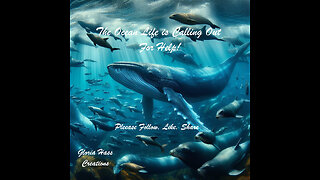 2:01
2:01
HealingsandTeachings
1 month agoThe Ocean Life is Calling Out For Your Help!
16 -
 11:41
11:41
Creative Society
28 days agoWhy Is the Ocean About to Boil?
1.02K10 -
 5:13
5:13
OzyMike
1 month agoMarine Life | Conservation #australia #wildlife #conservation
4 -
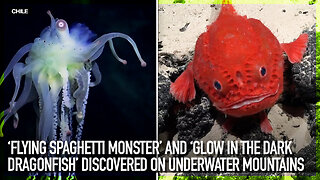 1:01
1:01
RT
1 month ago‘Flying spaghetti monster’ and ‘glow in the dark dragonfish’ discovered in underwater mountains
4.15K7 -
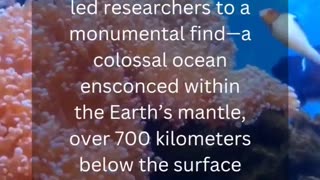 0:40
0:40
Path of The Soul
26 days ago#undergroundocean #ringwooditeocean#shortsfeed2024#karmashorts
36 -
 3:36
3:36
Animal Daily Trivia
1 month agoThe Secret Lives of Octopuses
46 -
 5:05
5:05
Bright Minds Journey
13 days agoSmooth Seas Do Not Make Skillful Sailors - Embracing Life's Challenges
6 -
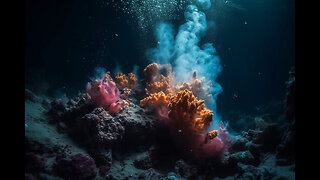 7:45
7:45
Studio64Productions
18 days agoDiscovery of Hydrothermal Vents in the Ocean's Dark Heart: Unveiling Deep-Sea Mysteries
33 -
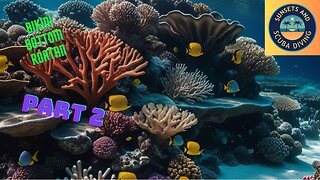 5:24
5:24
Sunsets and Scuba diving
1 month agoExploring the Wonders of Bikini Bottom in Roatán | a coral Adventure
36 -
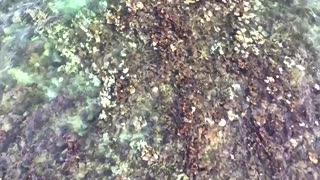 2:30
2:30
Reuters Innovation
1 month agoWhy coral reefs could die from mass bleaching
20